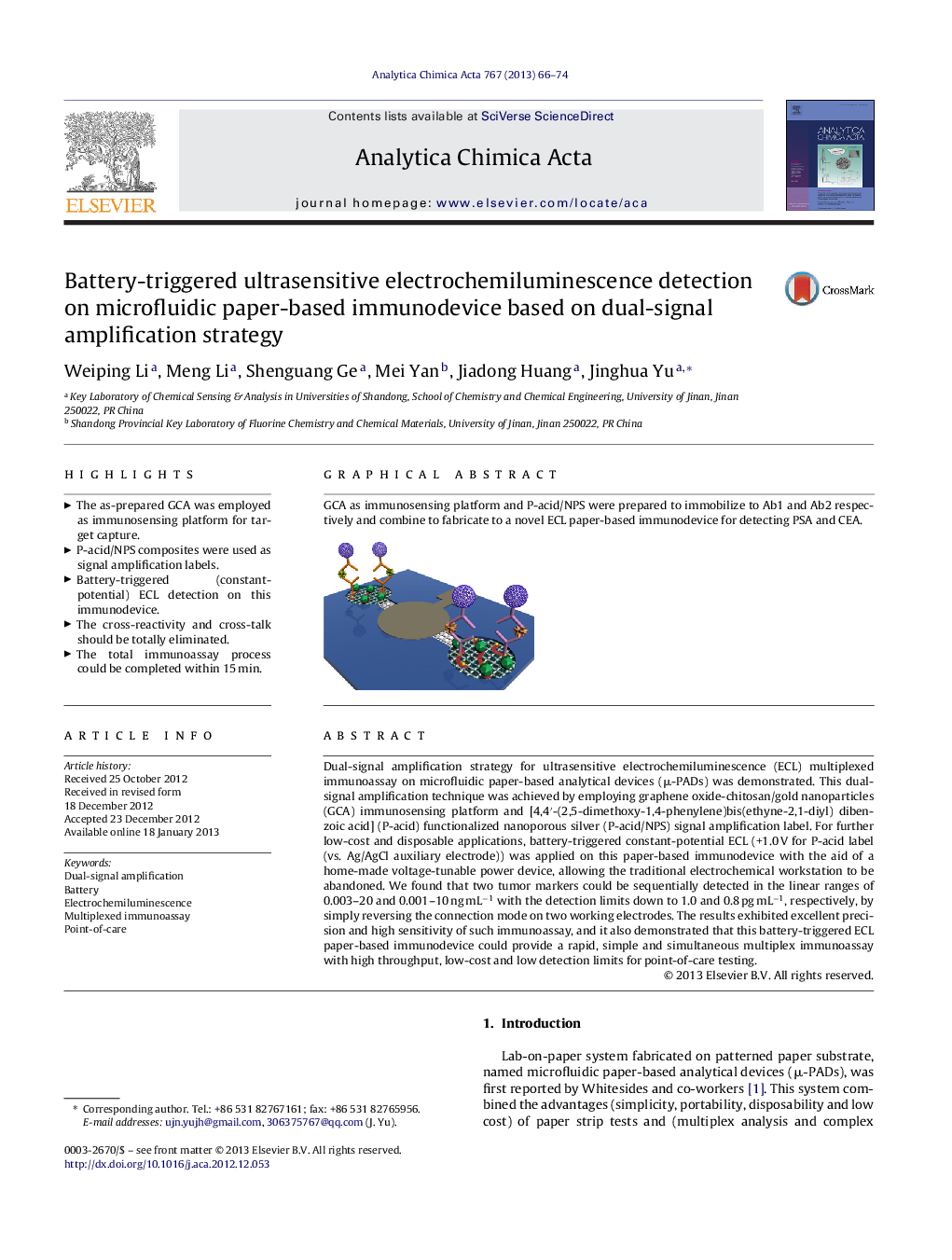| Article ID | Journal | Published Year | Pages | File Type |
|---|---|---|---|---|
| 1165538 | Analytica Chimica Acta | 2013 | 9 Pages |
Dual-signal amplification strategy for ultrasensitive electrochemiluminescence (ECL) multiplexed immunoassay on microfluidic paper-based analytical devices (μ-PADs) was demonstrated. This dual-signal amplification technique was achieved by employing graphene oxide-chitosan/gold nanoparticles (GCA) immunosensing platform and [4,4′-(2,5-dimethoxy-1,4-phenylene)bis(ethyne-2,1-diyl) dibenzoic acid] (P-acid) functionalized nanoporous silver (P-acid/NPS) signal amplification label. For further low-cost and disposable applications, battery-triggered constant-potential ECL (+1.0 V for P-acid label (vs. Ag/AgCl auxiliary electrode)) was applied on this paper-based immunodevice with the aid of a home-made voltage-tunable power device, allowing the traditional electrochemical workstation to be abandoned. We found that two tumor markers could be sequentially detected in the linear ranges of 0.003–20 and 0.001–10 ng mL−1 with the detection limits down to 1.0 and 0.8 pg mL−1, respectively, by simply reversing the connection mode on two working electrodes. The results exhibited excellent precision and high sensitivity of such immunoassay, and it also demonstrated that this battery-triggered ECL paper-based immunodevice could provide a rapid, simple and simultaneous multiplex immunoassay with high throughput, low-cost and low detection limits for point-of-care testing.
Graphical abstractGCA as immunosensing platform and P-acid/NPS were prepared to immobilize to Ab1 and Ab2 respectively and combine to fabricate to a novel ECL paper-based immunodevice for detecting PSA and CEA.Figure optionsDownload full-size imageDownload as PowerPoint slideHighlights► The as-prepared GCA was employed as immunosensing platform for target capture. ► P-acid/NPS composites were used as signal amplification labels. ► Battery-triggered (constant-potential) ECL detection on this immunodevice. ► The cross-reactivity and cross-talk should be totally eliminated. ► The total immunoassay process could be completed within 15 min.
